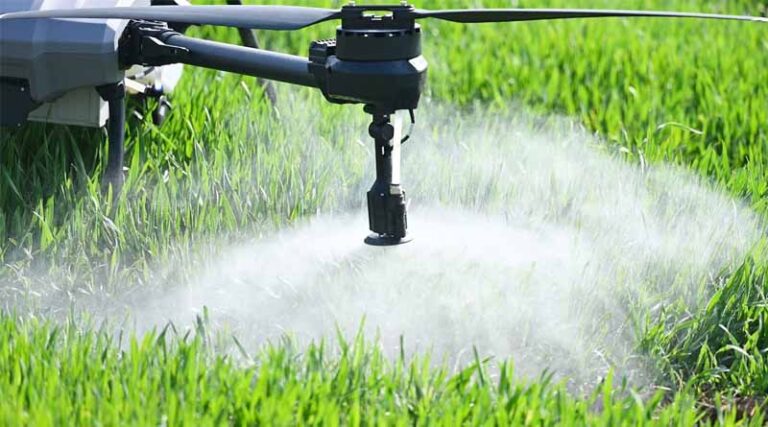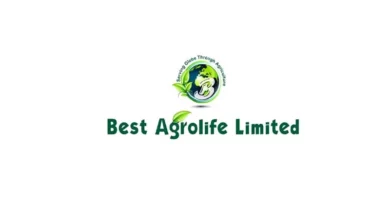
Global Agrochemical Patent Expiries 2026–2028: $1.15 Billion Market Opens for Generics
16 June 2025, New Delhi: The global agrochemical industry is entering another crucial phase as patents on several key molecules approach expiry between 2026 and 2028. Following a significant wave of expiries that occurred between 2021 and 2024, this next round brings fresh opportunities for generic manufacturers, particularly in emerging manufacturing hubs like India.
This analysis has been compiled by Krishak Jagat’s Global Agriculture as part of its ongoing research on global agri-input market trends.
2026: Key Blockbuster Molecules Head Toward Expiry
In 2026, three critical agrochemical molecules are scheduled to lose patent protection: Cyantraniliprole, Pinoxaden, and Sulfoxaflor.
Cyantraniliprole, jointly developed by Corteva, FMC, and Syngenta, is a widely used broad-spectrum insecticide effective against lepidopteran larvae, thrips, aphids, and other chewing pests. It is applied extensively across soybean, rice, cotton, fruits, and vegetables. Its patent expiry is expected to invite significant generic competition, particularly in Asia and Latin America, where pricing pressure and smallholder affordability are key concerns.
Pinoxaden, developed by Syngenta AG, will also exit patent protection in 2026. With a global market size of USD 421 million, it has been a critical selective herbicide for controlling monocotyledonous grass weeds such as wild oats, ryegrass, and blackgrass. Its major applications in winter and spring wheat and barley make it highly valuable for cereal production worldwide. The upcoming generic versions are likely to bring cost advantages to cereal growers across multiple geographies.
Sulfoxaflor, from Corteva Agriscience, though scheduled for expiry in 2027, will start seeing generic development activity by 2026. With a market value of USD 190 million, Sulfoxaflor is essential for controlling sap-sucking pests across cotton, soybean, cereals, fruits, and vegetables. Its unique mode of action makes it especially valuable for integrated pest resistance management programs. The expiry paves the way for its wider adoption in markets constrained by cost and limited accessibility.
2027: Sulfoxaflor Fully Enters Public Domain
By 2027, Sulfoxaflor will officially become off-patent, triggering open competition from generic manufacturers. Its significance is particularly high for Indian agriculture, where crops like cotton and soybean face persistent challenges from sucking pests such as aphids, jassids, and whiteflies. Affordable, generic alternatives of Sulfoxaflor will likely contribute to lowering pest management costs for Indian farmers, while boosting domestic manufacturing of high-value insecticides.
2028: Benzovindiflupyr Expiry Reshapes Fungicide Market
In 2028, Syngenta’s Benzovindiflupyr will complete its patent life. With a global market size of USD 419 million, this broad-spectrum fungicide is extensively used for managing fungal diseases such as blight, mildew, rust, scab, and leaf spot in crops like corn, soybean, ornamental plants, and turf. As it becomes available for generic production, competition is expected to rise not only in pricing but also in formulation innovation and combination product offerings, making it an attractive segment for global and Indian generic manufacturers.
New Opportunities for Indian Agrochemical Industry
For Indian manufacturers, this window from 2026 to 2028 presents significant opportunities to strengthen their global presence. India’s established capabilities in synthesis, technical manufacturing, and cost-efficient production offer a competitive edge. Molecules such as Cyantraniliprole, Pinoxaden, Sulfoxaflor, and Benzovindiflupyr are already in demand across India’s key cropping systems, making their transition to generic availability even more strategically relevant for the domestic market.
With India’s policy thrust on self-reliance in agri-input manufacturing, these upcoming patent expiries align well with government objectives to enhance domestic production and reduce dependence on imports, while also supporting farmer affordability.
The period from 2026 to 2028 represents a significant chapter in the evolution of the global agrochemical sector. As patents on these high-value molecules expire, a new phase of competition, innovation, and realignment is set to unfold. For generic manufacturers worldwide, and particularly in India, the opportunity to capture significant market share while offering affordable and effective solutions to farmers has never been more promising.
Also Read: Bayer Launches New Insecticide ‘Bicota’ for Managing Stem Borers in Paddy
📢 Reach Farmers, Share Your Story, and Grow Your Brand!
Got news to share? A company story to highlight? Looking to launch an impactful advertising campaign? Connect with us at info@krishakjagat.org or nimishgangrade@krishakjagat.org and make your mark!
📢 Connect with 100+ Million Farmers! India’s leading farmers rely on Krishak Jagat’s Hindi website for trusted agriculture news, advisory and insights. Click here to explore!






